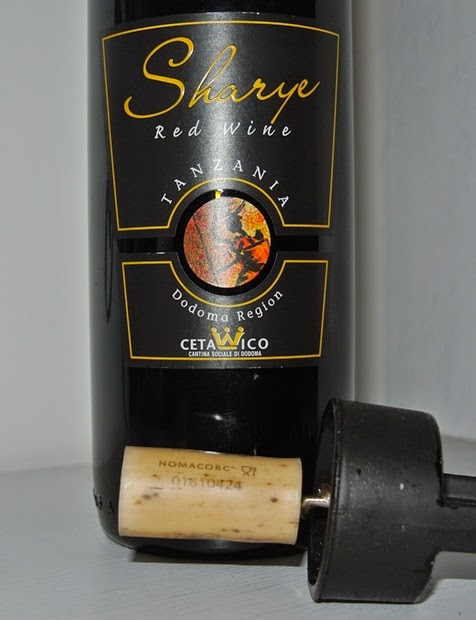Friuli is a region of
great wines. And great drinkers, too. So, when I had to choose the wine to be
drunk during the party for the baptize of my second child I went straight to
this producer. What brought me up to Savorgnano in a cloudy and rainy
afternoon? The curiosity to visit this cellar, the variety of the wines they
produce, the freshness of their marketing and communication policy and, in
addition, the not so common (in Italy) possibility to buy biologic, good, wine.
I climbed the hills
of Friuli, surrounded by peace and vineyards and, despite the rain, the visit
and the view were fantastic. My memento of that trip? Thirty bottles of wine.
And among them, here it is the most … uncommon! Mr. Picolit!
Domaine and vineyard
The Aquila del Torre story began in 1904 when Cavaliere Sbuelz purchased
200 “campi” of land to create the estate. In 1922, Aquila del Torre extended
over 111 hectares, of which about 90 were farmed and 21 left as woodland. Even
at that time the main crop was the Picolit grape, which was grown in
association with fruit trees – pear, apple, peach, cherry and plum – and the
cultivation of forage grasses as foodstuffs for horses, cattle and sheep.
The family that runs nowadays the wine estate started, in 1996, a
complex and huge work of stabilising and constructing terracing for vine
plantings while at the same time restructuring the ancient stable where the
Vineria wine centre and cellar are now housed. Last they moved to the organic
cultivation on all the 18 hectares vined today.
Aquila del Torre's terrain is at an elevation of 175 to 350 metres above
sea level. The hillslope vineyards are planted to a single-row terrace pattern
to trap the sunshine and ensure consistent ripening of the grapes which, exclusively hand-picked, are transported for selection and vinification
to the multi-level cellar, where fruit moves from the delivery zone to the
pressing area by force of gravity alone. A special room for drying grapes has
been set up in the driest, best-ventilated part of the cellar.
The wine
Oasi 2010 comes from different small
cru hidden among the woods; the terroir is Flysch, interbedded clayey-textured marl and sandstone; on the hill
slope have been created some terraces on an elevation from 175 to 300 meters
above sea level
The vines, averagely
12 years old, are trained in Guyot simple system, with an average density of
5000 vines per hectare and an average yield of 0.8 kg per vine.
The harvest starts
with a bunch selection on the vine and then goes on manually, using small
cases.
Once in the cellar
the fermentation is conducted with native yeast in French oak barrels and the
wine mature there 12 months before being bottled and put on the market.
Tasting Note
|
Date
|
05 July 2014
|
|
|
|
Wine name
|
OASI
|
Vintage
|
2010
|
|
Nation
|
Italy
|
Region
|
Friuli Venezia Giulia
|
|
AOC-DOC
|
//
|
Grape Varieties
|
Picolit
|
|
Serving temperature
|
10-12° C
|
Alcohol
|
14
|
|
Price (in euro)
|
25
|
|
|
|
Visual Examination
|
Taste analysis
|
||
|
Limpidity
|
Brilliant
|
Body
|
Full
|
|
Color
|
Straw yellow
|
Balance
|
Balanced
|
|
Consistency
|
Quiet consistent
|
Soft sensations
|
Warm – Soft
|
|
Effervescence
|
//
|
Hard sensations
|
Quite Fresh - Tasty
|
|
|
|
Flavors intensity
|
Intense
|
|
Olfactory analysis
|
Flavors
|
Citrus fruits, hints of balsamic
|
|
|
Aroma intensity
|
Intense
|
|
White flowers
|
|
Complexity
|
Complex
|
Finish/Persistence
|
Persistent
|
|
Quality
|
Fine
|
Overall evaluations
|
|
|
Aromas
|
Floral, Mineral, Citrus fruits
|
Development
|
Ready
|
|
|
|
Harmony
|
Harmonious
|
Food pairing
Soft-paste cheese,
moderately strong blue cheese, rice or pasta with wild spring greens or
seafood, baccalà alla vicentina (milk-poached salt cod); salty plumcake with bacon and stalks of spring onions.
Dry Vinification of
natural sweet grapes in my mind tastes a bit of challenge. It means to react to
the standard and common use to look for uncommon sensations and tastes. And the
Oasi of Aquila del Torre is really a great victory in this challenge. I have loved
this wine from the very first glass: the story, the aromas, the flavors. And
the pairing with soft paste cheese (I live in France now …) really fantastic.
I will come back to
visit again this winery to tell you something more about them and to unveil some
other little treasures that their sage hands can produce.
Official website: www.aquiladeltorre.it













